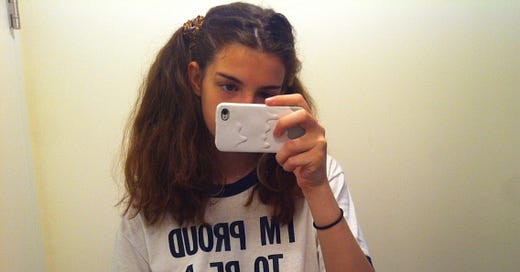I was extremely online.1 For three consecutive summers, I navigated the internet around the clock on my ThinkPad computer (the one with the red button in the center of the keyboard) at the height of my developmental years. This transitional phase from middle-schooler to high-schooler was no joke to me. I never asked to grow up and wanted nothing to do with it. So, when I logged onto Tumblr.com, it was as if I had never existed.
I scrolled night and day. I gawked as text posts, photos, videos, GIFs, Ask Me Anythings, Anonymous messages, and the occasional audio post traversed my dashboard. I rhythmically hit the J and K keys to comb through it all. I ‘connected’ with people who shared my interests and got unreasonably angry at those who didn’t. (This was when the SJWs were starting to make noise.) I molded a personality through different forms of media that I couldn’t possibly recreate in the real world.
Tumblr only allowed up to 200 posts per day. I’d like to think that it was put in place to dissuade users from spending an excessive amount of time online. Looking back, I think it was really about making sure the system didn’t crash.
By the time I got abruptly cut off by the post-limit, I felt uneasy. I had no life anymore. What I knew was taken away from me and put into a locked container with a countdown. A healthy person would admit defeat and find something else to keep busy. But I had to find another way to stay online, even after being banished. My life depended on it.
I could remain online by scheduling posts to be published later. By lining up a queue, I could still scroll through my dashboard and soothe my anxiety about facing reality. It still contributed to my daily post limit when it ran the next new day, but being active online didn’t mean anything to me. I just needed to consume.
At this point, consciously or not, I was posting incessantly. I created an endless stream of content on my blog; a self-sustaining organ that churned without me. I had nursed a mini-me through reciprocity by feeding it my online addiction. I’d hit post-limit before waking up that day.
My blog grew exponentially. Everyone and their mother could see that I was posting at any time of the day. I, or either it, became vitally unstoppable. I had amassed tens of thousands of like-minded people (media conglomerates creaming their jeans right now) just because I was uninterruptedly online.
After a lot of digging (and cringing) - I found this selfie when I was at the peak of my Tumblr era; the pigtails, the melting iPhone case, and the absurd t-shirt are quintessential.
It was one of the lowest points in my life despite loving the thrill of being regarded as somewhat of importance online which kept me so addicted. I quickly became aware of my digital footprint when I moved onto Twitter. After accumulating another couple thousand followers from oversharing online, I deactivated my account.
A lot has happened between then and now, but that anxiety stayed with me for almost a decade. I’ve had a hard time setting up an online presence ever since. I still run my Tumblr blog, though. I use it as a comedown session when I get overstimulated by TikTok. (Oh my fucking god???)
As a journalist, who relies on social media to promote my work, depends on it to upkeep a professional portfolio, and uses it as a way to freelance their opinions in hopes that someone hires me to elaborate on my 180-character idea, I reinstalled Twitter and kept it–almost exclusively–to share my articles.
Now, I’m here, using self-prescribed exposure therapy to find a balance between comfortably sharing online and having a life outside social media. I don’t worry that I’ll sink back into that feral state. There were a lot of outside factors contributing to my isolation.
My phobia of being perceived online is still a work in progress. Thank you for letting me divulge.
Another term is “chronically online” to describe those who spend so much time online that it skews their sense of reality. I dispute this term because, unlike any other chronic condition, you can simply log off.




